What’s Flying Now in New Jersey
August/September/October
By Wade and Sharon Wander
This feature is a general planning guide to what time of year to look for different species of butterflies in North Jersey and is designed for the beginning and novice butterflier. For daily updates on what is being seen and where, check out the NJ Butterfly Club sightings page and the South Jersey Butterfly Log. And you can’t do better than getting out in the field with the local experts in our club.
Although August is considered summer for vacationers and meteorologists, for butterfliers it marks the beginning of the earnest northward movement of some southern species. These are the best months to see species such as Cloudless Sulphur, Gray and Red-banded hairstreaks, American Snout, Variegated Fritillary, Common Buckeye, Long-tailed Skipper, Fiery Skipper, Sachem, and Ocola Skipper. (Except for Ocola Skipper, these species typically are seen earlier in the season in South Jersey.)

Painted Lady
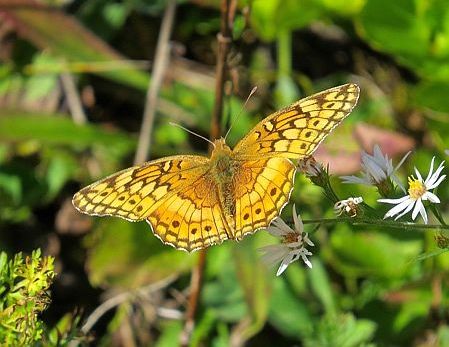
Variegated Fritillary
August and September are also the months to see the final broods of multiple-brooded resident species before they disappear until the following spring. The list of these species is long and includes the swallowtails, Harvester, coppers, White-M Hairstreak, Pearl Crescent, Meadow Fritillary, Eastern and Gray commas, Question Mark, Mourning Cloak, American Lady, Red Admiral, Horace’s and Wild Indigo duskywings, Common Checkered-Skipper, and many species of grass-skippers. Speaking of grass-skippers, the second half of August and the first half of September is the ONLY time to see the magnificent (for a grass-skipper) Leonard’s Skipper, now restricted to a handful of high-altitude locations.
And in some years the populations of Painted Lady and Milbert’s Tortoiseshell explode and they become fairly widespread and common in late summer and fall. Naturally, these years are impossible to predict so one must be ever vigilant and active and keep checking the sightings pages.
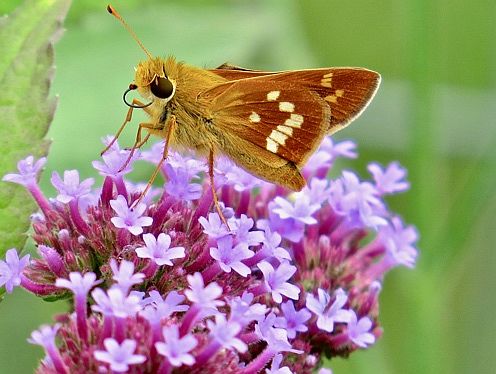
Leonard’s Skipper
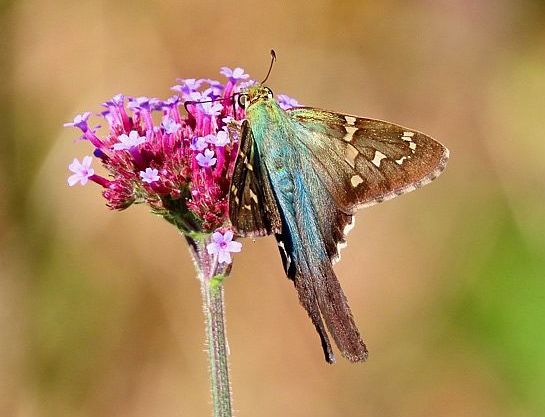
Long-tailed Skipper
Late summer—and especially fall—are the times when we northerners head south to Cape May and the Delaware Bayshore to see good numbers of species that occur rather sparsely up here, such as Cloudless Sulphur, Common Buckeye, Fiery Skipper, Ocola Skipper, and Sachem (and maybe finally get a handle on IDing the latter); local specialties such as Hayhurst’s Scallopwing; and of course some hoped-for southern species such as Little Yellow, Long-tailed Skipper, and Clouded Skipper. And it’s the best time to witness the mass migration of Monarchs which, under certain weather conditions, congregate by the hundreds and even thousands in coastal locations.
After October it’s pretty much bye-bye butterflies for those of us north of Burlington County, but if you check out the South Jersey log you’ll see that a few hardy species can be found even through the winter.
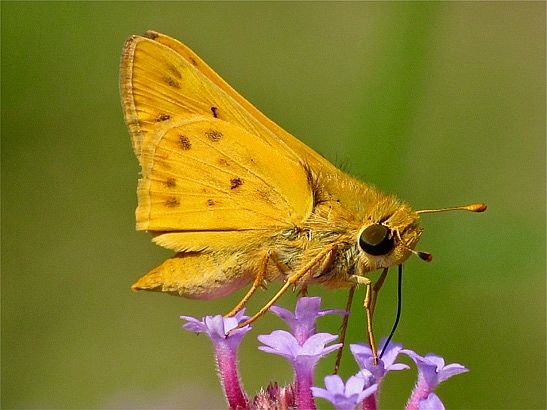
Fiery Skipper
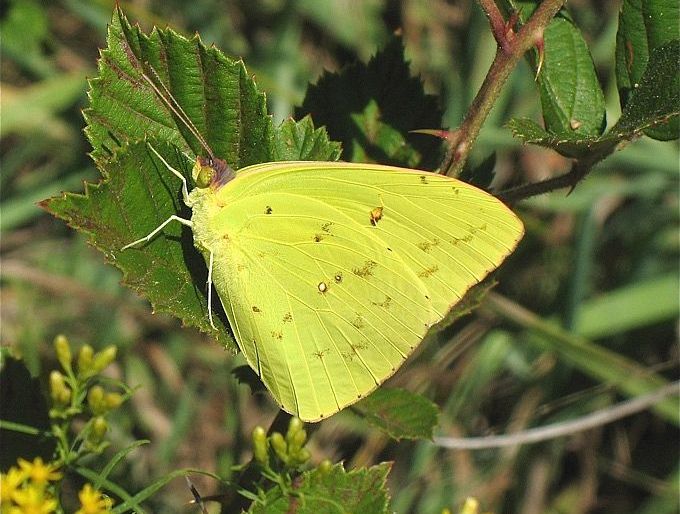
Cloudless Sulphur
Whether this is your first year as a butterflier or the latest of many, no matter how often one may have seen a given species in the past, it is always exciting to encounter the first-of-year (FOY) individual!
Just a few other things to bear in mind while searching for butterflies:
- Most species emerge earlier in Monmouth and Mercer counties, for example, than at the higher elevations of the colder northern counties.
- Year-to-year variation in species abundance is to be expected. For example, some years Red Admiral or Painted Lady may be common or even abundant and other years decidedly uncommon.
- Lastly, do not enter private property without permission from the owner lest we butterfliers become unwelcome. In these situations, please conduct your observations from the edges of public roads.

Ocola Skipper